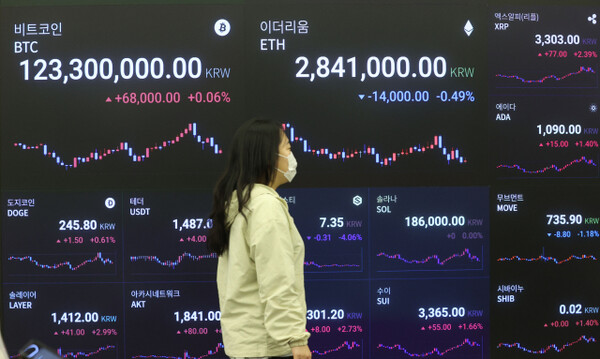The domestic virtual asset market has grown rapidly to a scale of 105 trillion won. The number of coiners (coin investors) is on the verge of reaching the '10 million' era.
According to data received by Democratic Party of Korea member Ahn Do-geol from the Financial Supervisory Service on the 23rd, the total amount of virtual assets held by the top five domestic exchanges (Upbit, Bithumb, Coinone, Korbit, and GOPAX) last year was 105.107 trillion won. This is the largest amount since the 'virtual asset bubble' in 2021.
The virtual asset holdings of the top five exchanges grew 11.4 times over four years, from KRW 924.5 billion in 2020 to KRW 105.107 trillion in 2024. It grew 2.5 times over three years compared to KRW 41.9272 trillion at the end of 2021, when the virtual asset boom occurred. The annualized return is 36%.
Based on the number of duplicate accounts, the number of virtual asset investors in the top five domestic exchanges is 9,667,000, approaching 10 million. By age group, there are 1.82 million in their 20s and younger, 2.8 million in their 30s, 2.67 million in their 40s, 1.75 million in their 50s, and 630,000 in their 60s and older. Those in their 30s and 40s recorded the largest number of investors, at 29% and 28%, respectively.
The average virtual asset holdings per account were confirmed to be 10.8 million won. By age group, it is △20s 2.4 million won, △30s 7.3 million won, △40s 12.2 million won, △50s 18.5 million won, and △60s and above 2.4 million won. People in their 50s are investing the largest amount.
Rep. Ahn emphasized, “If you look at the numbers alone, our country is at the center of the digital financial revolution,” and “Now is the golden time to take the lead in the market through institutionalization.”
He added, “We must urgently establish minimum regulations, such as converting virtual assets into reserve assets, legislating token securities offerings (STOs), introducing virtual asset spot exchange-traded funds (ETFs), issuing won-denominated stablecoins, expanding corporate and foreign investment, and reorganizing the tax system.”









